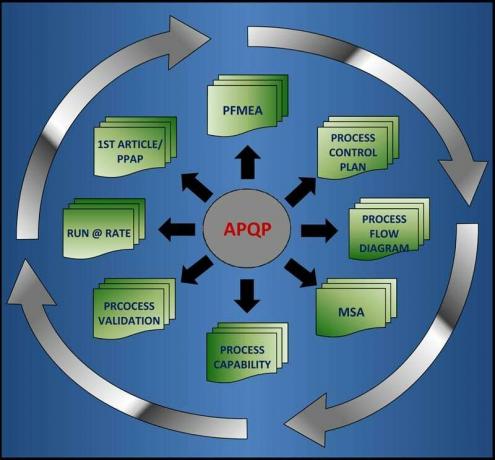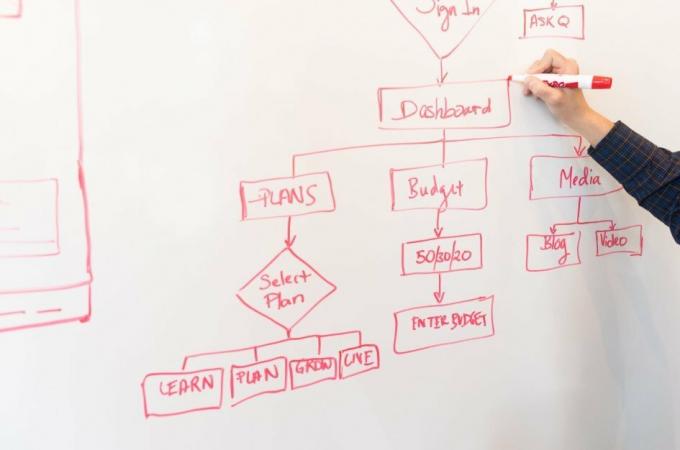The Industrial Revolution in the nineteenth century marked a before and after in the component of production of goods and services, the The use of machines changed the work rules and conceived a change from an agricultural production, manual to a mechanized one and in Serie.
The production process includes a set of activities aimed at transforming productive factors or resources into products, goods and / or services with the ultimate objective of satisfying the market demand.
Advertisements
Designates that series of tasks that are carried out and are necessary to carry out the transformation of raw materials and supplies into a final or partial product that will then go through another process until it becomes the final product to be marketed. It should be noted that these actions occur in a way, planned, dynamic and consecutive.
In this article you will find:
Definition of production process
With the above, you can define the production process as the consecutive chain of activities destined to the transformation of raw materials into other products, whether they are secondary products or finished products suitable for consumption, starting with the design, then going to production until they reach the shelves to be sold to the consumer.
Advertisements
Resources involved in the production process
- Physical resources: The infrastructure as such, buildings, warehouses, offices, warehouses, etc.
- Economic resources: Invested capital, financing, insurance, etc.
- Technological resources: Machinery and equipment.
- Human resources: Workforce, professional trained for the different activities of the process.
Stages of the production process
To understand the production process, it is necessary to take into account its different stages and how they intervene in the achievement of the final product, so that these satisfy customers' need.
These stages may vary according to the type of industry, but in general terms they can be:
Advertisements
Analysis stage
It is the first stage of any production process, the raw materials to be used in the manufacturing, the main objective in this phase is to get as much raw material as possible to the lower cost.
It is in this phase that the raw material is decomposed into small usable parts, and the production objective to be achieved is set.
Advertisements
Synthesis stage
The raw materials previously collected, undergo the necessary transformations until they become the product that the company promotes.
This stage is carried out through the mounting that the company has, during it the quality standards must be observed and compliance with them must be controlled. In order for this stage to be as planned, observation work is necessary to allow anticipate changes and draw up an action plan at all times based on compliance with the objectives.
Advertisements
Conditioning stage
This productive stage aims to adapt the product to the customer's needs, a stage oriented towards storage, marketing, transportation and other elements associated with the demand.
Without forgetting the control task, which allows to know if the delivered product has met the objectives and with the quality that customers demand.
Process types
Linear or per product process
Intended for the production of a good or service specific, where the machine involved and the raw material used are based on the requirements of the product itself. This type of single product process allows high production levels to be achieved and requires the personnel involved to achieve high efficiency.
This process can also be:
- Per batch: A small quantity is produced as often as necessary. It admits change, for example, to produce a batch of different products the machines can be changed.
- Mass production: Hundreds of identical products are produced on a production line, although it involves the assembly of individual sub-assemblies and the automation of a large part of the tasks within the process.
- Continuous production: It allows the manufacture of many thousands of identical products unlike the previous two To meet these product volumes, production is maintained 24 hours a day, seven days a week.
In this way, performance is also maximized by eliminating the costs of starting and stopping the process, which is highly automated.
Intermittent process
It is the process in which production is carried out in batches, it is organized in work centers, where machines with similar characteristics are grouped.
The product in the production process passes through and is controlled by the departments that it deserves.
The production obtained does not show a regular flow, the advantage of this type of production process is that it allows the production of a variety of similar products, with few modifications.
Process by project
Intended for the production of products with unique characteristics, for example a house, a boat, or a movie. This is in itself a series of activities carried out to achieve progress in production or construction of a certain project.
It is important to focus the planning and control of each of the individual tasks, to face the general objective in the best way.
Process on request
Under this modality, only one product is produced at a time and they are all different, this process involves work labor intensive, although it supports the interaction of manual manufacturing with the use of some equipment or machines.
As is already known, the process will also depend on the type of product that is offered, the production of fresh products is not the same as the production of furniture, in addition to the fact that there are various economic sectors and ways of working, so it also has a lot to do with the installed capacity, the machines and the personal.
To conclude, it is important that the productive process take into account the characteristics of the market, so that they work as allies and can adjust or adapt to each other, in order to avoid crisis situations. For example, excessive demand can produce shortages or shortages, and otherwise a production process for above the demand it would be generating over production or supply, which results in low sales and losses to the business.


